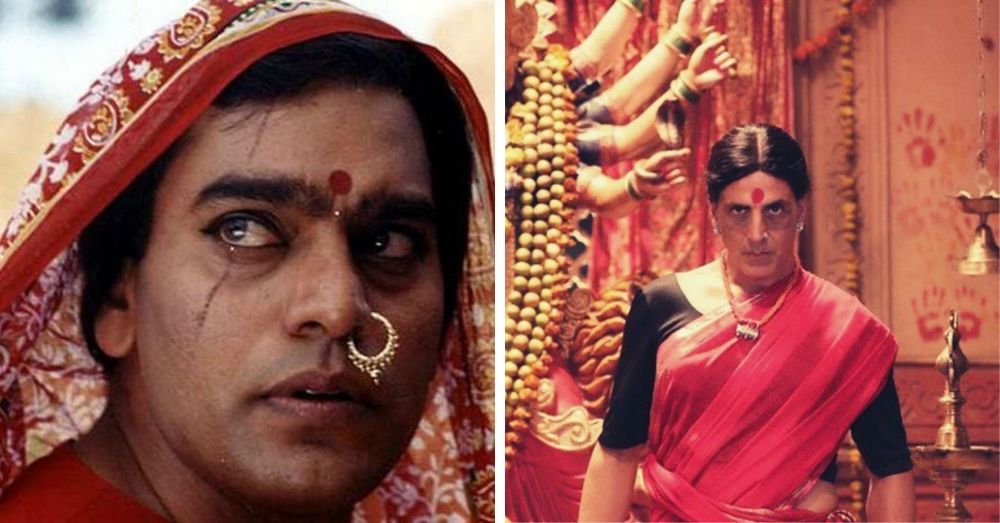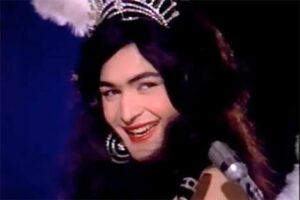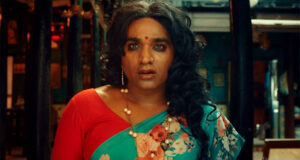Trans representation in Indian cinema

In most Bollywood films either the transgender person is a horrifying villain or the worst kind of comic stereotype
“Actor Akshay Kumar’s latest film Laxmii, released in November 2020 is a horror-comedy that is neither scary nor funny. However, that alone isn’t the reason why it has found itself at the bottom of the IMDB rating scale. What makes it an unbearable watch is the way in which it peddles blatant gender stereotypes and uses physical comedy to show a transgender spirit trapped in a cisgender man’s body,” explains Anupam Kant, a Delhi based film critic.
Despite masquerading as a film that tells the story of a transwoman, Kant says, one finds a terrible misrepresentation of the trans community in it. Unfortunately, it is an only new addition to the long list of Indian films that have misrepresented the trans community.
“As an Indian kid and a keen lover of mainstream cinema growing up in the late 1990s and 2000s was a perplexing time – because the pop culture I consumed gave me some warped ideas of gender and sexuality,” Rahul Das, a 26-year-old Delhi-based transgender model tells Media India Group.
Das says that Indian cinema, especially Hindi cinema, has not had the best record in terms of gender and sexuality. From blatant sexual objectification to glorifying stalking and harassment, Bollywood has treated women abominably; but, it didn’t stop just at cis women. When it comes to the transgender or hijra communities, the industry has fared even worse.
Transgenders in Bollywood – Terrifying villains
“One of my most vivid memories surrounding Bollywood as a kid is being utterly terrified, to the point of having nightmares, by the character of Lajja Shankar Pandey from the film Sangharsh (1999),” says Das.
The character Das refers to was of a transwoman who was a Kali (Hindu Goddess) worshipper and was played by Ashutosh Rana. The trans character in the film abducted little children and sacrificed & cannibalised them at Kali’s altar. “Watching the film at the tender age of 10, my horror obviously stemmed from the whole scary-child-murderer aspect of the character, but as I slowly grew up and watched a lot more Bollywood, I realised that this part of a larger problem; a larger systematic horror,” adds Das.
In most Bollywood films featuring a transgender person even in a minor role, two disturbing polarities of representation find their way. Either the trans person is a horrifying villain or the worst kind of comic stereotype, with offensive transphobic humour directed at them.
“There is a sustained othering which takes place here, where the trans person is constantly seen as outside the bounds of ‘normal’ – as a sexual predator, a child molester, or someone who is out to prey on or deceive the unsuspecting (cis) hero or heroine,” says Das.
Even the critically celebrated film like Mahesh Bhatt’s Sadak (1991) has one of the most jarringly violent depictions of a transwoman in the character of Maharani (queen), played by Sadashiv Amrapurkar. Maharani’s function in the plot is, again, to be the villain depicted as an evil brothel owner who tortures and traffics young women.
Das further explains that in a film where the trans character gets so much screen time, there is a constant reiteration of the worst kind of harmful myths and tropes associated with the trans community ultimately creating a stereotype in Indian mainstream culture which became hard to shake off.
Taking off from this, countless other films both big and small, played on this trope of the evil-trans-brothel-owner-or-villain, like in 2011 film Murder 2.
Shallow & ridiculous comic relief
In Bollywood comedies, trans characters face similarly horrific treatment. Very often trans people are seen to be preying on the hero sexually or turned into exaggerated effeminate caricatures who exist to elicit laughs.
“When the transwomen characters do rarely attract the attention of the hero, he is ultimately repulsed once he discovers that the trans woman in question is not an ‘actual woman’ and finds himself ‘deceived’ – a form of transphobic hate that trans people go through very often in their real lives,” Das adds.
While films like Kya Kool Hain Hum series (2016), Partner (2007), Masti (2004) and many more not only feature such horrific stereotypes of trans women as sexual predators but also makes them a laughing stock on being discovered as a trans person.
“What follows the ‘coming out of the closet’ in Hindi films, is going into an immediate panic, and nearly fleeing the scene. Trans characters’ presence is depicted as if the very sight of them is abnormal,” Das explains.
Trans people are abnormal but cis men in drag are applauded
Despite the rampant transphobia, one particular trope is extremely popular in Bollywood, even after so many years, and that is cross-dressing men. Celebrated, A-list actors have all dressed in drag one time or the other—whether it be Aamir Khan in Baazi (1995), Rishi Kapoor Rafoo Chakkar (1975), Amitabh Bachchan in Laawaris (1981), Shah Rukh Khan in Duplicate (1998), Govinda in Aunty No 1 (1998) and many more have been celebrated characters in Indian cinema.
Das says that crossdressing can be extremely subversive through its challenging of rigid gender norms and furthering of gender-fluidity. But the problem is, in Bollywood, that’s not what happens. Often, crossdressing becomes objectification and blatant stereotyping—of not just trans women, but also cis women.
“Men who dress in drag use it as a means of comic relief (almost in all the movies mentioned above) where the laughs are elicited from the fact that ‘oh look, it’s a man in a dress!’ This further stigmatises the act of gender non-conformant dressing. Why does a man dressing in drag have to be something funny? Why can’t it be normalised, and even, a means of empowerment,” asks Das.
When men dress in drag in Bollywood films, the loss of their masculinity through that act is constantly highlighted, and to perform the more physically able roles, they have to transform back into their masculine selves.
Das explains that it is similar to Some Like It Hot (1995) where Tony Curtis’ character has to change back from drag into his more masculine demeanour to woo and become desirable to Marilyn Monroe – only, in the case of Bollywood, Das says, the problems are magnified tenfold.
Underappreciated but notable trans characters in Hindi cinema
While the question of trans representation in Bollywood is indeed a concerning one, the situation is not entirely bleak. There are some positive representations, even if they are extremely few and far between.
The 1997 film Tamanna had a complex portrayal of a transwoman, played by Paresh Rawal, who finds an abandoned girl child and raises her as her own. Though heavy-handed in places, it deftly tackles both transgender issues (such as discrimination, misgendering, violence against the trans community) as well as female infanticide.
Daayra (1996) is another film which deals with gender-fluidity in interesting ways. It depicts a transsexual character who forms a close relationship with a young girl who takes on a male identity (in other words, who is gender-fluid).
However, these films barely got any mainstream attention and failed at the box office.
South Indian beacons for trans representation
Das says that though the mainstream Hindi cinema or Bollywood has done more harm than good to the trans community, some regional south Indian films have tried to break the mould of trans stereotypes in India.
Super Deluxe, a 2019 Tamil film, is a thought-provoking assemblage of four different stories that intertwine on one fateful day. One of the big blockbusters of 2019, the film was noteworthy for its sensitive sketch of a transgender character Shilpa played by Vijay Sethupathy. Whilst highlighting the hardships and stereotypes that the transgender community faces, the director succeeds in presenting Shilpa with inherent dignity and nobility that the character deserves, never once stooping into caricatured assumptions.
Another film that makes a case for gender diversity and equality is the Malayalam film Njan Mary Kutti (2018). Actor Jayasuriya in the titular role plays a transsexual man harbouring wishes to join the police force but struggles with the acceptance of his identity and is a victim of cruel discrimination associated with his orientation. The film was lauded for creating believable characters and going above the conventional taboos set by society.
Unimpressed with the overall scenario of the trans community in Indian cinema, film critic Kant says “If many south Indian films can correct themselves in trans representation, so can mainstream filmmakers. Filmmakers hold supreme responsibility in being sensitive, empathetic and rational while attempting to make films on the said theme. And as complex as it may seem, the underlying principles of treating people respectfully and equally is a no-brainer and requires no special education,” he adds.











